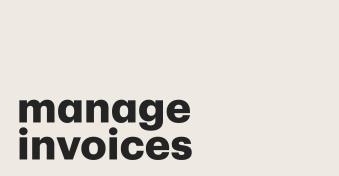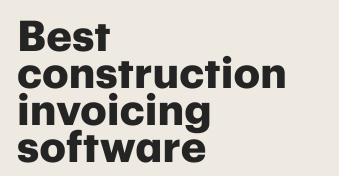Have you ever wondered why asking for an invoice payment properly matters?
After all, isn’t it obvious your clients should pay for delivered work?
The short answer is yes, it should be obvious to them. No one wants to wait weeks for a well-deserved payment.
Getting paid on time is the key reason service providers learn how to ask for invoice payment in a clear and professional manner.
Let’s explore what “professionally” here means and how you can speed up the payment process through 4 simple steps.
How to ask for payment professionally
Many service providers feel uncomfortable asking for money from clients, especially if those clients are late on payments or worse — they disappear once the work is done.
Aside from being polite and direct with your payment request, here are some steps you can take to simplify the payment-chasing process as well as streamline your document workflows:
Step 1: Review the invoice you sent
Once the deliverables are completed and the invoice has been sent out, review the document to verify all the contact information and payment gateways.
Think of your invoice as a business card — you want your client to quickly find all the required information without getting lost or requiring extra data when receiving and then paying your invoice.
Make sure the following information is present and easily readable:
- Header
- Your company contact information
- Client’s business information
- Invoice number
- Issue and due dates
- Payment terms
- List of goods or services
- Taxes, fees, and discounts
- Total amount due
- E-signature
For example, you can use PandaDoc templates to check what information should be included in your invoice and modify it if something has been lost during invoice creation:
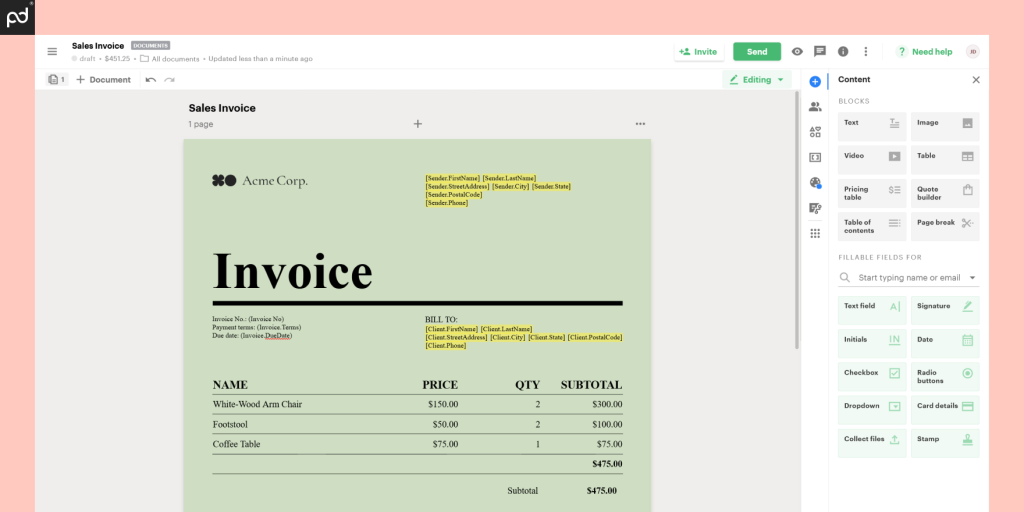
Pro tip: You want your clients to quickly pay your invoice without any financial hassle. They want this too!
Therefore, it’s best to provide clients with options to pay directly in the invoice through payment options like these:
- Stripe, including using Stripe for ACH payments
- Autorize.net
- Square
- QuickBooks Online
- PayPal
PandaDoc supports all of these integrations, allowing you to quickly insert preferred methods when working with its invoice templates.
Here is how it will look from your side:
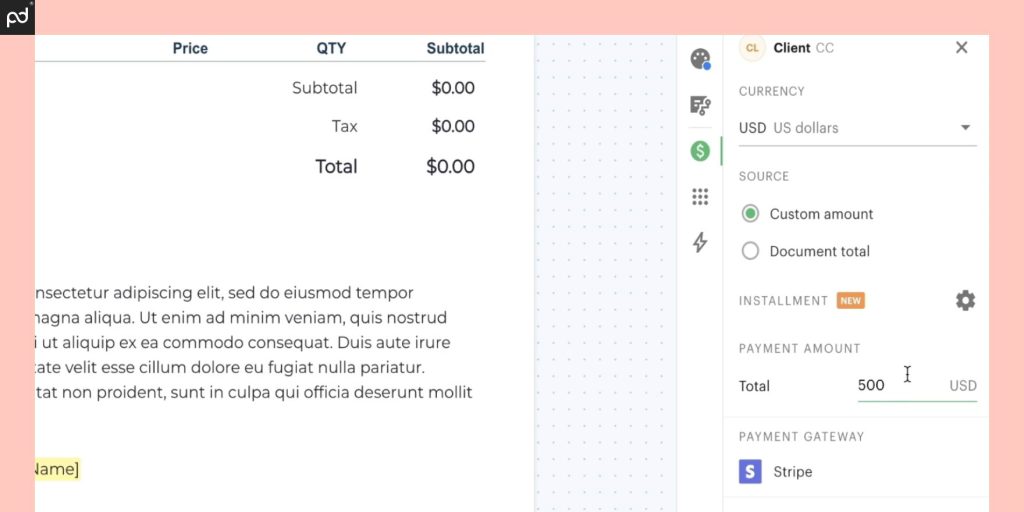
And here is what your client may see when opening the invoice request:
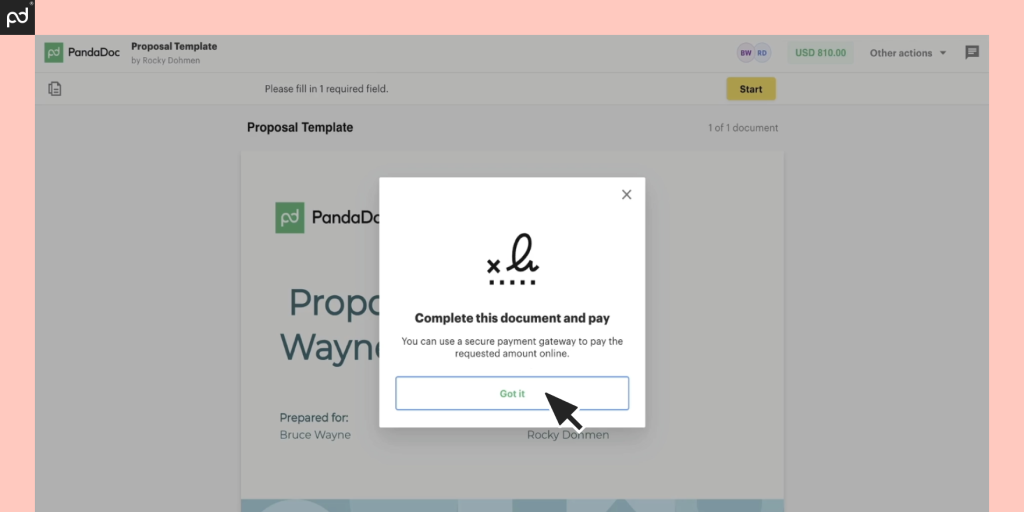
Step 2: Check payment status
First things first — check whether the client has received your invoice and whether the payment gateway is suitable for their business.
Note that even if paid by the client, your payment may take longer to reach you in some cases.
For example, It’s easier to check whether the invoice has been opened and viewed through a document analytics feature:
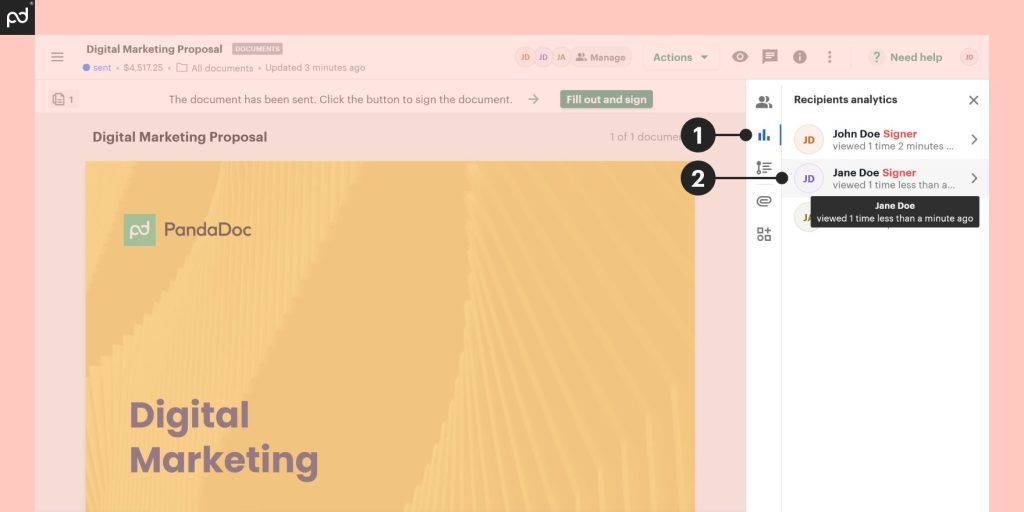
Instead of worrying about late payments or constantly checking up with a client, it’s best to have a software program that keeps you informed regarding any changes.
For example, some apps will automatically send notifications when the payment has been processed from the client’s side.
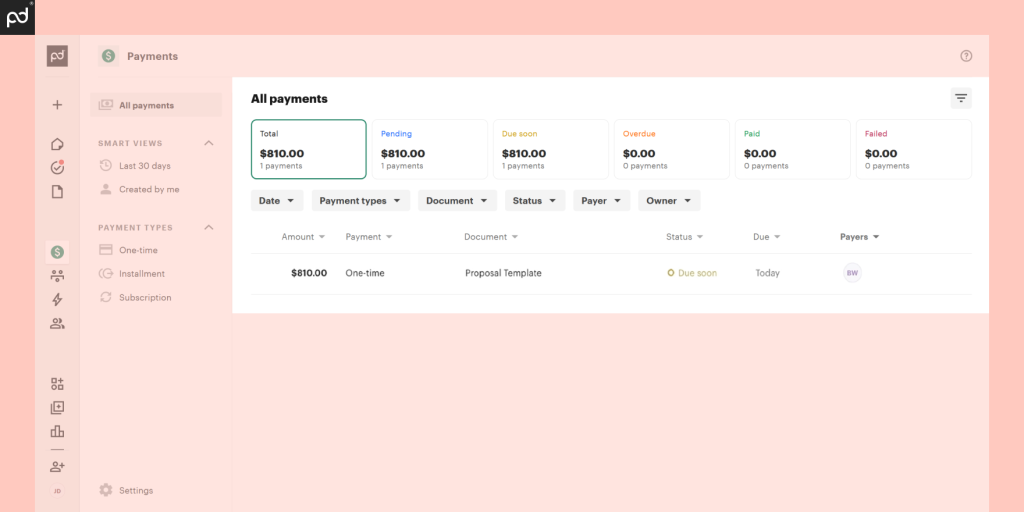
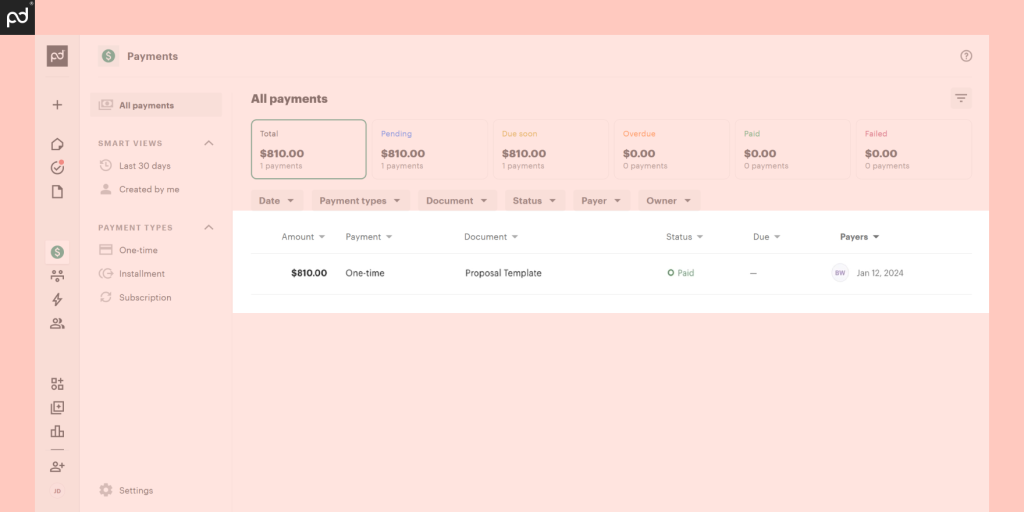
Step 3: Follow up the client with payment reminders
If a client hasn’t paid within the timeline listed in an invoice, consider sending follow-up payment reminders when:
- The due date is soon
- The day after a due date
- The payment failed status
Here are some things to consider when writing an invoice payment reminder to be sent via email or any other communication channel:
- A subject line should contain the invoice number and due date so the recipient won’t overlook all the details in the box, slowing down the process.
- Reattach the invoice to the email or hard copy reminder.
- Show empathy in the first payment reminder, keeping in mind that the recipient may just have forgotten or had every intention to pay but got busy in their lives. Avoid statements that are too pushy or cold, like “You have to pay by___.” Instead, go forward with “A kind reminder that the payment is due by___.”
- Ask the client about the payment options you provided since they may not work for them, and if that is the reason for the payment being late. Ensure they know how to pay through the options you offered.
- List out the payment terms and fees that will be charged if your invoice shifts to “late payment” status.
Here is a payment reminder template:
Hello {client name},
I hope you’re doing well! This is a kind reminder that invoice {invoice number}, which was sent on {issue date}, will be due in 2 days. Please take a look over the invoice when time permits and let me know if you have any questions or if any issue arises so I can help resolve it.
The original invoice is attached for your convenience.
You may pay by credit card, or online through Stripe or PayPal payment links you can find in an invoice. If you need anything from my side, please don’t hesitate to reach out.
Thank you,
{Your name and business data}
You can use invoice management software to automatically send payment reminders on chosen dates.
For example, here is how it can be done with PandaDoc:
1. Hover over a document’s name on the far right and find three vertical dots
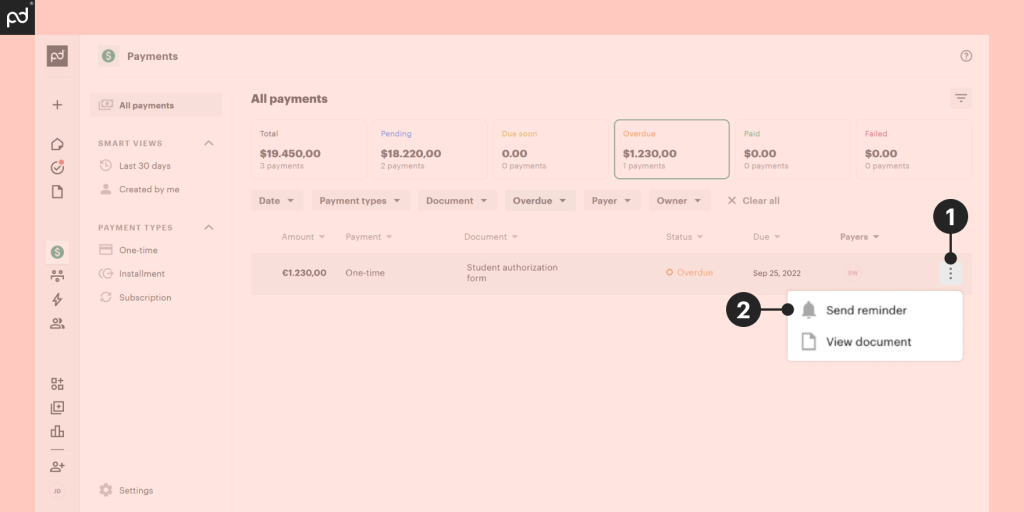
2. Choose the recipient and click Send the reminder
You can also add an optional reminder message if required.
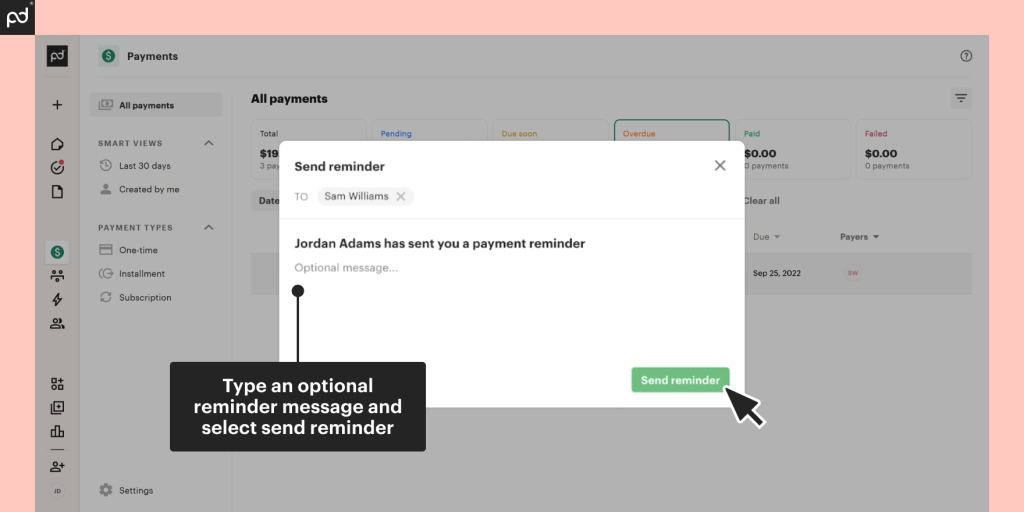
If you don’t get any replies, consider a simple phone call if the client doesn’t respond to the reminders.
Note that there may also be a case where your client is just going through some financial issues and you still need a payment.
In this case, you may present the option to get paid in installments.
Here is a brief view of how it works with PandaDoc:
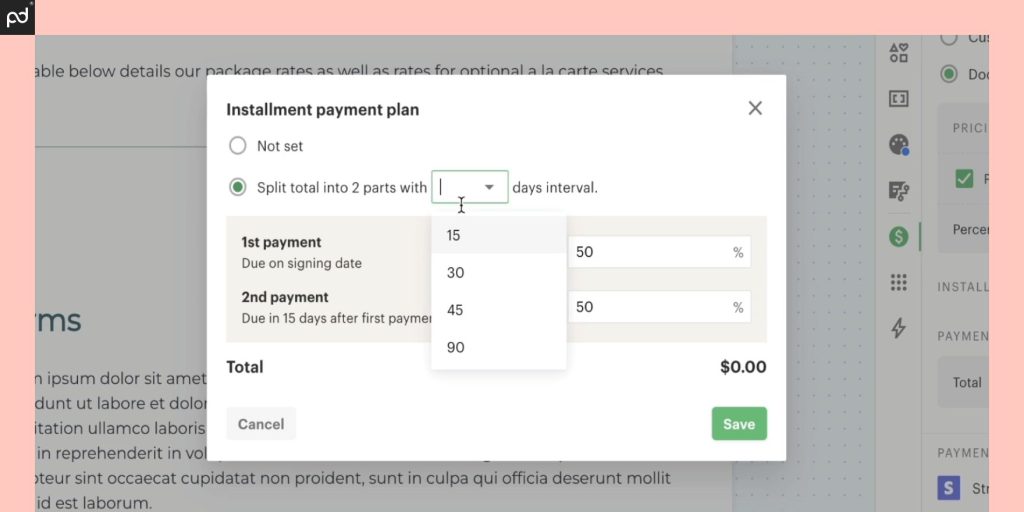
Step 4: Send a revised invoice in cases of overdue payments
You finished your part of the deal and expect the same kind of accuracy from the client — timely payment for a job done.
But if your client forgets to pay, does that mean your invoice becomes invalid?
The short answer is no; it becomes overdue.
Let’s say you stated your invoice is payable within 14 days of receipt — the invoice will be considered overdue as soon as this deadline has passed.
If your invoice does not include a due date, the document typically remains valid between two and six years, but exact time depends on the state in which you live.
Chasing an overdue invoice usually involves three steps:
- Sending a demand letter as a follow-up email, stating that this is the last reminder before fees will be applied once the due date has passed.
- Sending past due invoices with late fees and interest once the invoice becomes overdue.
- Taking legal action either through court or by hiring a debt collection agency.
The interest you can charge in case of an outstanding invoice is called “statutory interest.”
You can display this fee on your invoices, and it should be based on the terms and conditions displayed in the contract the client signed — even though the invoice itself is not a contract.
Late fees are any amount you want them to be (as long as they were agreed to in the signed contract).
Generally speaking, it’s a set percentage of the amount owed and can be compounded each month that the late payment is overdue.
Send the past due invoice with included fees for the month and leave a note in your accompanying email acknowledging this is a second notice since the payment is now 30 days (or the timetable you’ve set) overdue.
Follow up with the client or seek legal help until you receive or confirm a payment plan.
The bottom line
As a freelancer or a small business owner, you wear many hats in your day-to-day work life, and sometimes it’s hard to proactively manage all tasks.
Solutions that deliver the winning combo of making your job simpler and getting you paid faster are always a welcome addition.
Using PandaDoc payment processing software provides a clear path to streamline the invoicing and late fee processes, increases your chances of getting paid on time, and keeps you updated on payment status without constantly checking in with the client.
Disclaimer
PandaDoc is not a law firm, or a substitute for an attorney or law firm. This page is not intended to and does not provide legal advice. Should you have legal questions on the validity of e-signatures or digital signatures and the enforceability thereof, please consult with an attorney or law firm. Use of PandaDoc services are governed by our Terms of Use and Privacy Policy.
